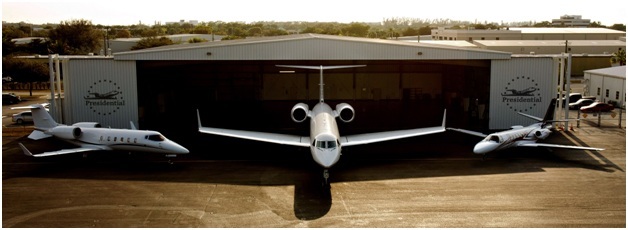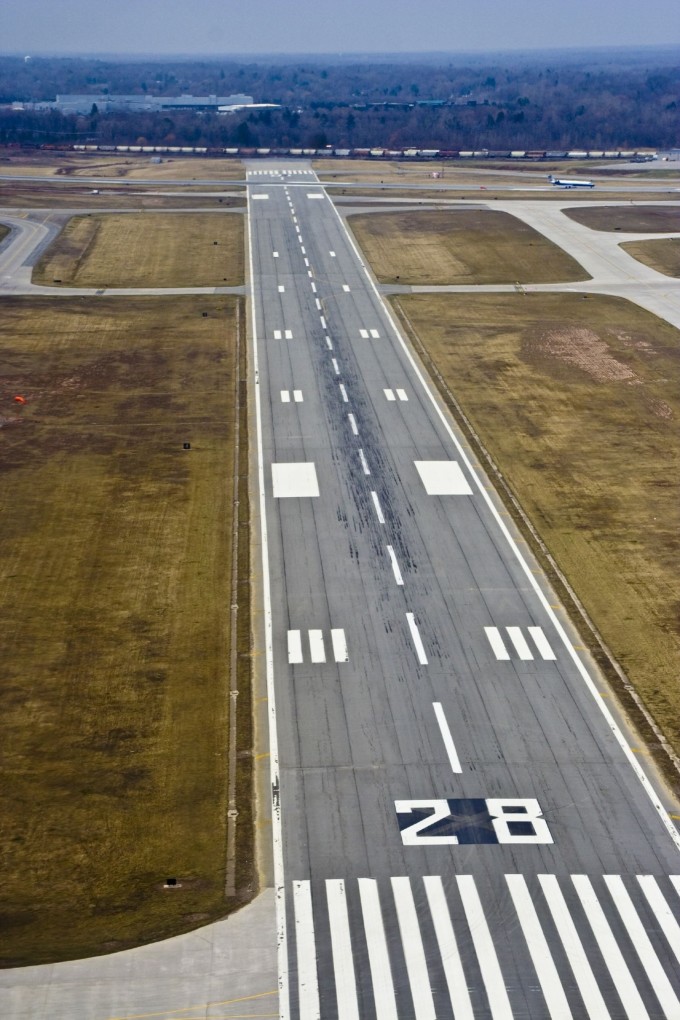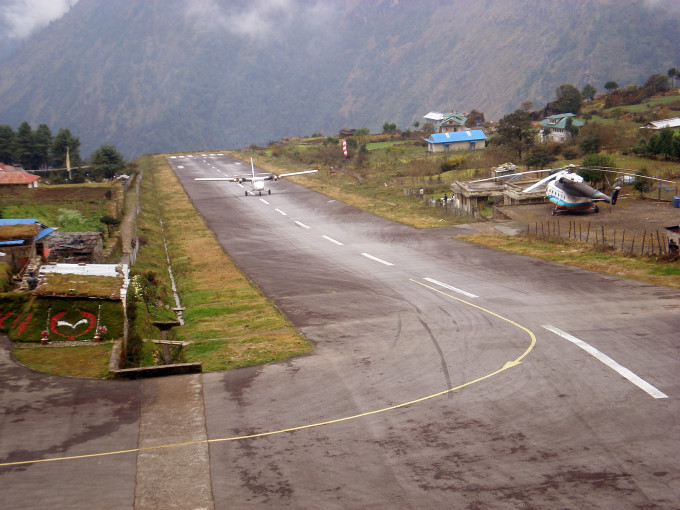Introduction
The MLS is a system of precission approach for landing by instruments and constitutes a kind of an alternative to the ILS system. It provides information about the azimuth, optimal angle of descent and the distance, as well as data about the reverse course in case of an unsuccessful approach. It has several advantages compared to the ILS, for example a greater number of possible executed approaches, a more compact ground equipment, and a potential to use more complicated approach trajectories. However for certain reasons, in particular the advancement of the GPS satelite navigation, was the installation of new devices halted and finally in 1994 completely canceled by the FAA organization. On european airports we can rather seldom come across an MLS.
The MLS provides an accurate landing approach for an aircraft in the area of the final approach, where the path of the final approach isn’t identical with the enlonged runway’s axis. The system works with a microwave beam that is transmitted towards the sector of approach and scans the sector both in the horizontal as well as the verical plane. An aircraft in the approach sector receives the signal and with the help of this beam evaluates it’s location in space. The aircraft’s position is therefore determined both in the horizontal direction of approach and the vertical plane, in whatever point of reach of the scanning beam. Because the microwave technology is radiated into the space of approach in a given time and it’s not spread out over different directions, no signal interruption results from various obstacles or terrain protrusions as it was with the ILS system. The MLS system can thus be situated also in developed areas, where an ILS system couldn’t be set up. An onboard computer enables to solve the approach manoeuvre from a random direction, for variously oriented runways, even along a curved of bend landing trajectory. The MLS system is approved by the ICAO for every three categories of an accurate landing approach.
Basic elements of the MLS
The MLS system is comprised of ground pieces of equipment that are divided into the protractor components, rangefinder components, and the onboard hardware. The information about the angles of the approach course, descent, flare and the course of an unsuccessful approach are aquired through an onboard antenna or the aircraft itself by measuring the time between two passages of an oscillating lobe of a high frequency signal . The distance is determined with the help of an ancillary device, the DME rangefinder. The MLS system further sends with the help of phase modulation and time-division multiplexing additional data, as identification, system status and so on. The ground equipment consists in the basic configuration of an Azimuth Transmitter (AZ) with an added DME rangefinder, perhaps even a more precise DME/P, in close distance of a course transmitter and near an elevation transmitter, see Fig. 1. A scaled up configuration is supplemented with a course transmitter for an unsuccessful approach and a flare transmitter.
(figure source: http://oea.larc.nasa.gov/trailblazer/SP-4216/photos/p42a.JPG)
Ground Distance Measuring Equipment (DME)
The rangefinder unit presents a DME which is positioned together with the course transmitter. In connection with requirements of accuracy of the MLS system arose a demand to refine the DME system, which was accomplished with the accurate DME/P rangefinder (along with the DME/W and DME/N). Hence the function of the DME is to provide a pilot information about the distance from a specific point which is essential for pinpoint calculation of the plane’s position in the three-dimensional space.
Ground protractor components
The ground principle of both protractor parts of the MLS system for horizontal and vertical homing of an aircraft is to create levelled emiting diagrams, oscillating at a constant speed in directions „TO‘‘ and „FROM“, and to measure the elapsed time between two passages of an oscillating plane lobe through an onboard MLS antenna.
A runway fully equipped with the MLS system contains four transmitters. Two relays supply information about the angle of the azimuth (horizontal) plane and are located face to the runway, along it‘s axis. They are appended with a DME or DME/P rangefinder device, while one of the transmitters is dessignated for the course of approach and the other for the course of an unsuccessful approach. They are positioned 400-600 m from the runway’s threshold. Another two relays transmit angular information for the descent and flare (taking over the function of a descent beacon in the ILS). These are located at a distance of 120-150 m from the runway’s axis, while the transmitter of descent signals is situated 200-300 m from the runway’s threshold and the flare relay 700-1000 m from the beggining of the runway in the direction of approach. If the runway’s equipped with both azimuthal relays, then the relay whose antenna is turned in the direction of an approaching aircraft (the transmitter on the faraway side of the runway) represents an approach course transmitter and the relay close to the approaching aircraft takes over the function of an unsuccessful course transmitter. It’s similar also for the descent and flare relays.
Onboard equipment
- One or more MLS antenna systems
- Onboard MLS receiver of signals of the ground protractor devices with a computing system for real time calculation of angular information
- Interrogator of the DME radio rangefinder
- Onboard MLS indicator
- Interconnection of the onboard MLS receiver’s output and the control systems
The onboard equipment has to be able to decode and process functions of the landing approach azimuth including one with a high frequency of regeneration, the reverse azimuth, the angle of descent, and necessary data to accomplish projected flights. Information about the distance is decoded independently. The homing angle is determined by measuring the interval between the reception of the scanning lobes „TO“ and „FROM“. If the equipment is qualified, the receiver has the option of manual or automatic selection of a landing approach trajectory, an angle of descent and a reverse azimuth. Operating in the automatic mode, the selection is made with the aid of information present in the code names of the primary data.
Principle of operation
The MLS system operates at a frequency band of 5031,0 – 5090,7 MHz on two separate channels at a mutual interval of 300 kHz. The protractor part of the MLS system provides continually information about an aircraft’s position relative to the runway both in the vertical and horizontal plane. The rangefinder part enables to measure the distance between an aircraft and the reference points in the approach process. The angular information for the approach course, descent, flare and go-around is determined by measuring the interval between two passages of an oscillating plane lobe through an onboard MLS antenna.
The MLS system is capable to provide coverage of maximum ± 60.0° in the azimuthal (horizontal) plane, whereby a typical device makes use of only ± 40.0° from the runway’s axis in the azimuthal plane for the final approach and ± 20.0° for a missed approach course, see Fig. 3. Of which the minimal ordained proportional homing sector is ± 10.0° from the runway’s axis. Thereafter is the space covered in the vertical plane from 0.9° to 15° with a coverage up to an altitude of 6000 m, for an approach distance of 37 km (see Fig. 4) and to a height of 1500 m and distance of 9,4 km for a missed approach.
(figure source: http://accessscience.com/loadBinary.aspx?filename=424150FG0020.gif)
(figure source: http://www.airresearch.com/Pilots/AIM/Chap1/f0101009.gif)
All data stated below is gradually transmitted on the same frequency with a repetitive frequency:
- 13 Hz – azimuth (course guide), for systems with the ability to swiftly restore the course information a frequency of 93 Hz is used.
- 6,5 Hz – missed approach course
- 39 Hz – elevation
In order to maintain a synchronized timing of the transmission’s individual data blocks, are all parts of the MLS synchronized. Data about the distance is received separately on an interconnected DME channel. Utilizing the MLS data with onboard computers and control systems, it’s possible to carry out a precision approach and landing in similar fashion as with the ILS system, on top with the option to execute curved of broken arched trajectories of approach and automatic landings. All parts of the MLS system include their own monitor circuits that in the case of an out of tolerance deviation of some outer MLS parameters switch the devices on a back up array. In case of a long-time deviation the pilot gives notice about the change to the traffic control.
The exact information about an aircraft’s position enables to perform more complicated procedures, as flying along a curved glide slope or using multiple glide slopes. An appropriate precision allows to improve the air traffic flow on busy airports through curved fly paths. ICAO quantifies the required system’s accuracy as stated in the ICAO regulations Annex 10.
The complete accuracy limits include all errors caused by the onboard equipment and radio waves broadcast. They’re specified for a part of the flight path containing the reference approach altitude and reference missed approach height for a go-around. The reference landing height is 15 m (50 ft).










